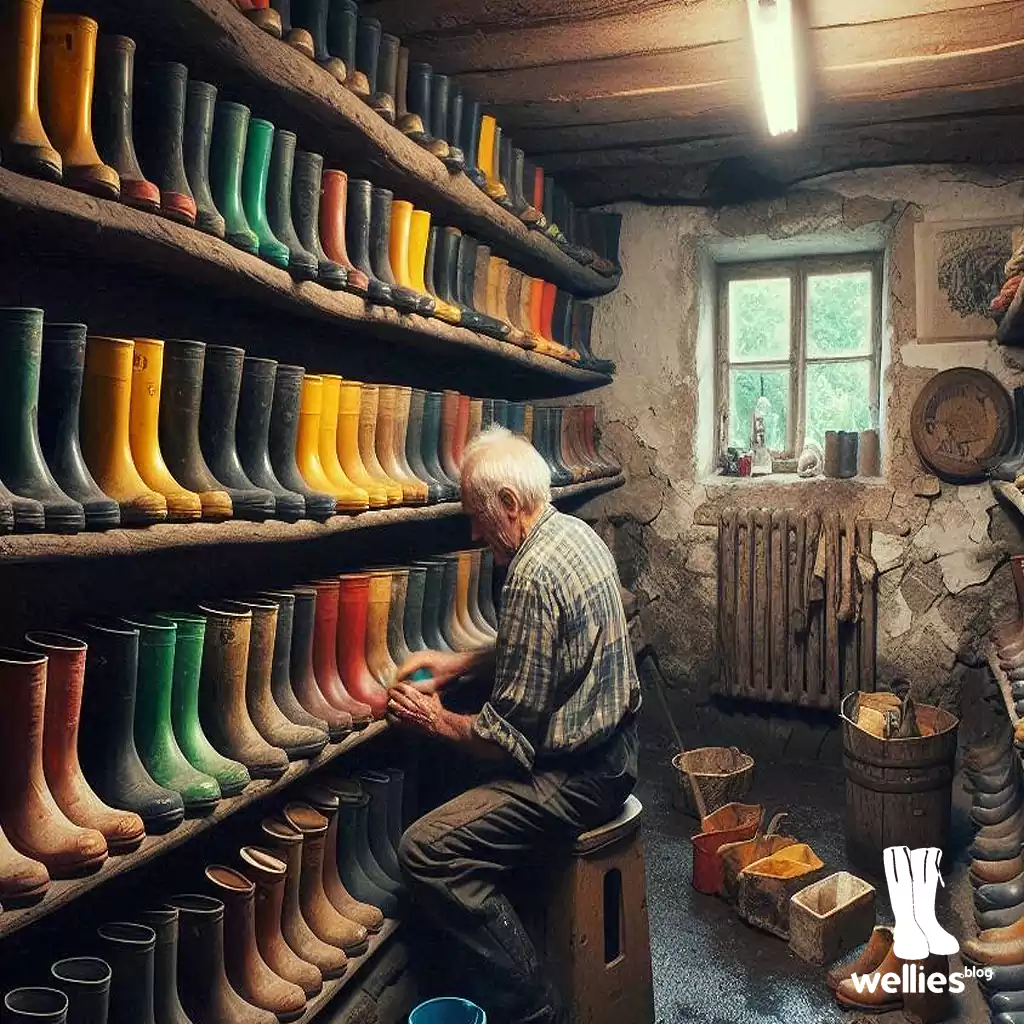This article explores the fascinating origins and evolution of three common names used to refer to the iconic rubber boot – ‘wellies’, ‘gumboots’, and ‘rubber boots‘. We’ll delve into the historical roots, cultural significance, and global popularity of these versatile and practical footwear. By understanding the unique histories behind these terms, readers will gain a deeper appreciation for the iconic status of the humble rubber boot.
Key takeaways
- The three common names for the iconic rubber boot are ‘wellies’, ‘gumboots’, and ‘rubber boots‘.
- Each name has its own unique history and cultural significance, reflecting the global popularity of this practical and versatile footwear.
- Understanding the origins of these terms can enhance our appreciation for the humble rubber boot and its enduring status as a symbol of British rural life.
- The wellies are deeply rooted in British culture, while ‘gumboots’ is more commonly used in countries like Australia and New Zealand.
- The rubber boot has evolved from a practical necessity to a fashionable and versatile footwear option, suitable for a variety of outdoor activities and events.
What are wellies?
Wellies, also known as wellington boots or rubber boots, are a type of waterproof footwear that are most commonly associated with rainy or muddy conditions. Originally designed for practical purposes, wellies have since become a fashion staple and are worn in a variety of settings, from farmyards to music festivals.
A brief introduction to the iconic rain boots
Wellies are a versatile and durable type of rain boot that provide excellent protection against the elements. Crafted from high-quality rubber or synthetic materials, these iconic rain boots are renowned for their waterproof properties, ensuring dry and comfortable feet even in the wettest conditions.
The versatility of wellies across seasons
The versatility of wellies extends beyond just rainy weather, as they can be worn in colder months to provide warmth and protection. Their insulating properties make them a practical choice for outdoor activities such as gardening, hiking, or farming, where they can shield the wearer’s feet from the wind, cold, and mud. The adaptability of wellies has contributed to their enduring popularity and widespread appeal across various seasons and settings.
The origin of the term “wellies”
The term “wellies” is firmly rooted in the history of the wellington boots, a style of footwear named after the renowned Duke of Wellington. As a prominent British military leader in the 19th century, the duke was known for wearing a particular type of knee-high boot that was designed to be practical and durable. This distinct style of boot eventually gained widespread popularity among the general public, leading to the coining of the colloquial term “wellies” as a shorthand reference.
The historical roots of the name
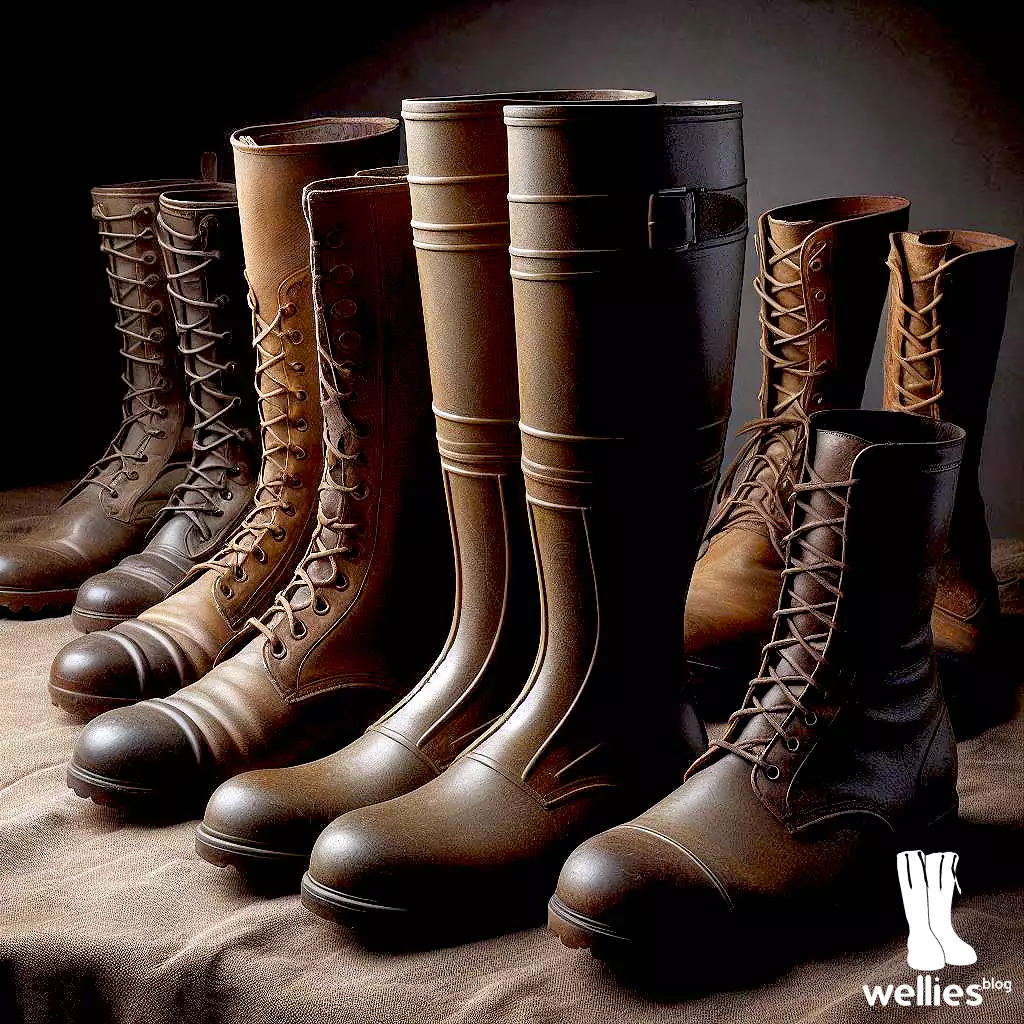
The origins of the term “wellies” can be traced back to the early 19th century, when the wellington boots first gained prominence. These boots were named after the Duke of Wellington, who was renowned for his military prowess and strategic leadership during the Napoleonic Wars. The duke’s preference for a practical, robust boot that could withstand the rigours of the battlefield soon caught the attention of the public, and the wellington boot became a symbol of rugged durability and functionality.
The duke of wellington’s influence
The Duke of Wellington’s association with the eponymous boot was a significant factor in the term “wellies” becoming the most widely used reference to this type of rubber boots in the United Kingdom. The duke’s enduring legacy and the widespread popularity of the wellington boot among the British public cemented the colloquial term “wellies” as the go-to designation for this iconic footwear. Today, the term “wellies” remains deeply ingrained in the British cultural lexicon, a testament to the lasting impact of the Duke of Wellington and the boot that bears his name.
The name “Gumboots”
Another common name for the rubber boot is “gumboots,” which refers to the material used to make the boots – rubber, or gum. Gumboots were initially developed as a practical solution for people working in wet or muddy environments, such as farmers, fishermen, and industrial workers. The name “gumboots” highlights the boots’ waterproof and durable properties, as the rubber material allowed them to effectively protect the wearer’s feet from the elements.
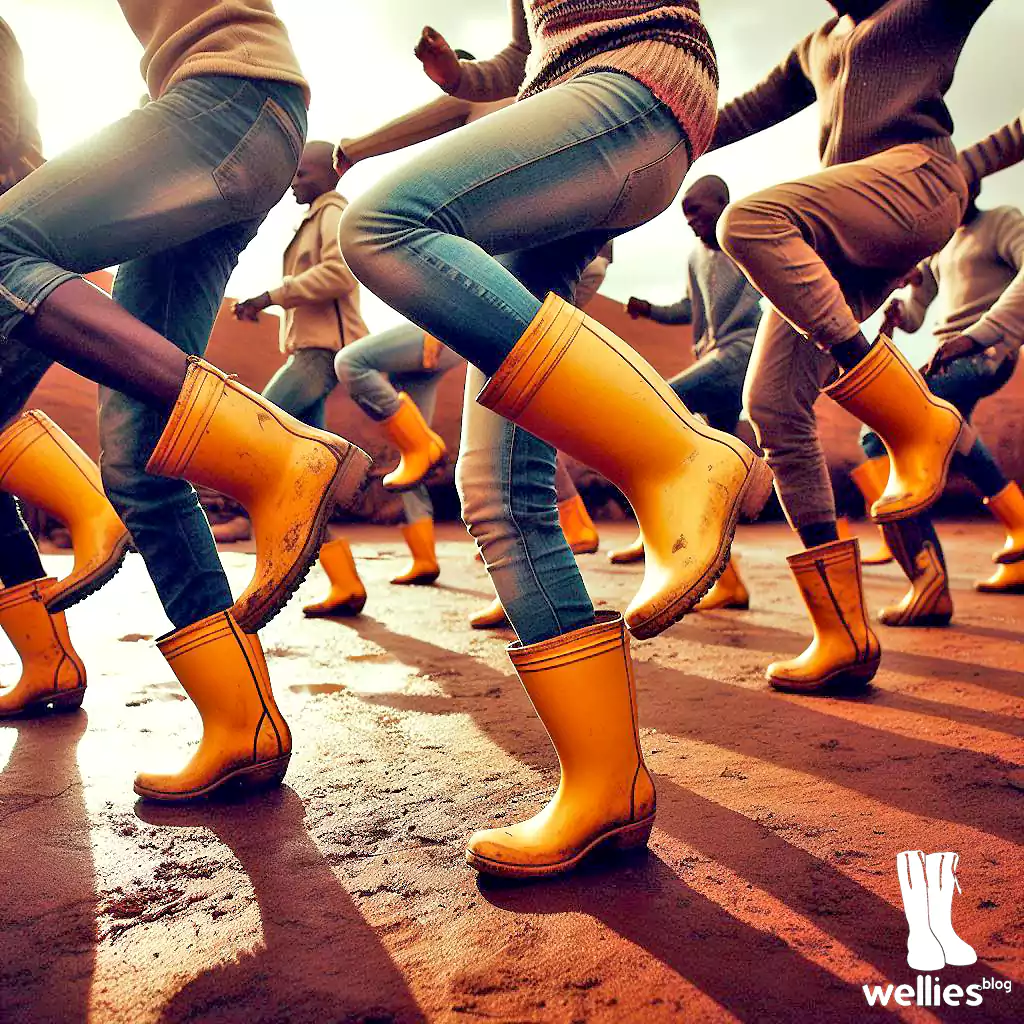
The rubber connection
The term “gumboots” stems from the natural rubber, or “gum,” used in the manufacturing process. This robust and water-resistant material made the boots an ideal choice for those who needed to navigate through challenging outdoor conditions, whether it was tending to crops, working on the docks, or labouring in industrial settings. The gumboot’s ability to shield the wearer’s feet from moisture and mud became an essential asset for these professionals, cementing the footwear’s reputation as a practical and reliable choice.
| Material | Waterproof | Durability |
|---|---|---|
| Rubber (Gum) | High | Excellent |
| Synthetic | Moderate | Good |
| Leather | Low | Fair |
The table above highlights the key properties of different materials used in the construction of gumboots, rubber boots, and waterproof footwear. The natural rubber, or “gum,” stands out for its exceptional waterproofing and durability, making it the preferred choice for those working in harsh, wet conditions.
Rubber boot, wellies, gumboot
The terms “rubber boot,” “wellies,” and “gumboots” are often used interchangeably to refer to the same type of waterproof footwear. However, there are some regional preferences and variations in how these terms are used. In the United Kingdom, “wellies” is the most common term, while “gumboots” is more widely used in countries like Australia and New Zealand. “Rubber boots” is a more generic term that can be applied to a range of waterproof footwear. The choice of terminology often reflects local cultural and linguistic traditions.
The interchangeable use of these terms
While the three terms may be used synonymously, they can also denote subtle differences in the design, material, or cultural associations of the boots. “Wellies,” for instance, are strongly linked to British rural life and outdoor pursuits, whereas “gumboots” have a more utilitarian connotation. “Rubber boots” is a broader descriptor that encompasses a variety of waterproof footwear, including the iconic wellington boot.
Regional preferences and variations
The prevalence of these terms can vary significantly across different regions and countries. In the United Kingdom, “wellies” is the most widely recognised and used term, reflecting the strong cultural heritage of the wellington boot. In contrast, “gumboots” is more common in countries like Australia and New Zealand, where the practical, rubber-based design is emphasised. In North America, “rain boots” or “rubber boots” are more commonly used, although “wellies” and “gumboots” are also recognised.
These regional preferences and linguistic variations highlight the global reach and adaptability of this versatile type of footwear. Whether known as “wellies,” “gumboots,” or “rubber boots,” the iconic rubber boot continues to hold a special place in the hearts and wardrobes of people around the world.
The evolution of wellies
Over the decades, the humble wellington boot, more commonly known as the “wellie,” has undergone a remarkable transformation, evolving from its practical origins as workwear to becoming a true fashion statement. What was once the exclusive domain of farmers, fishermen, and other outdoor professionals has now crossed over into the realms of high-fashion and everyday casual wear.

From practical necessity to fashion statement
The wellington boot’s journey from the farmyard to the catwalk reflects the changing attitudes and preferences of both consumers and designers. As the 20th century progressed, the practical and durable nature of the wellie began to capture the imagination of the fashion industry. Designers started to experiment with the iconic silhouette, introducing bold, colourful patterns and innovative materials to create a fresh, stylish take on the traditional rubber boot.
Modern styles and designs
Today, the modern wellie boasts a diverse range of styles and designs that cater to a wide array of tastes and preferences. From sleek, minimalist versions in muted tones to eye-catching, vibrant patterns, the wellington boot has become a versatile and stylish option for a variety of occasions. Whether paired with a casual outfit for a music festival or incorporated into a high-fashion ensemble, the wellie has firmly cemented its place as a fashionable and functional footwear choice.
The cultural significance of wellies
Wellies have become deeply ingrained in British cultural identity, particularly in their association with rural life and outdoor pursuits. In popular culture, wellies are often depicted as a quintessential symbol of the British countryside, appearing in films, television shows, and literature that showcase the pastoral lifestyle. The wellington boot has also become a fashion statement, with celebrities and influencers often being photographed wearing them at music festivals or country estates.
Wellies in british popular culture
The humble wellies have transcended their practical origins to become an iconic part of British popular culture. From the muddy fields of Glastonbury to the rolling hills of the Lake District, the wellington boot has become a recognisable emblem of the British experience. Whether worn by farmers, celebrities, or festival-goers, wellies have become a visual shorthand for the rugged, resilient, and adventurous spirit that is so central to British cultural identity.
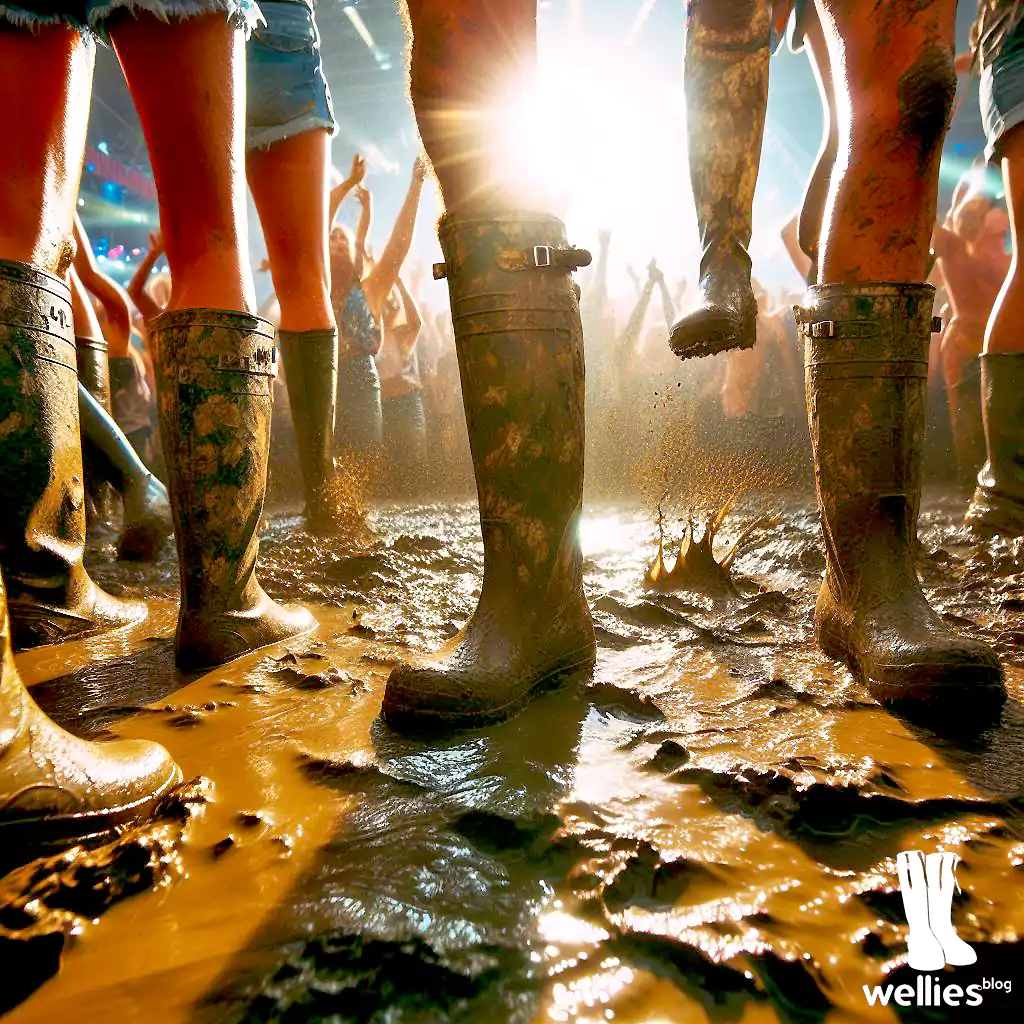
Wellies as a symbol of rural life
Beyond their practical functions, wellies have come to represent the resilience, resourcefulness, and connection to the land that are central to British rural traditions. The wellington boot has become a symbol of the hardworking, self-sufficient spirit that has long been associated with the British countryside. Whether trudging through muddy fields or traversing the rugged landscapes of the British Isles, the wellies have become an integral part of the rural lifestyle, linking the wearer to a deep-rooted history and way of life.
The versatility of wellies
Wellies are renowned for their versatility, as they can be worn in a variety of settings and for a wide range of activities. Beyond their traditional use in farming and rural pursuits, wellies are now commonly worn for outdoor activities such as hiking, gardening, and fishing, providing both protection and comfort in wet or muddy conditions.
Wellies for outdoor activities
Whether you’re tackling a challenging hiking trail or tending to your garden, a reliable pair of wellies can make all the difference. The sturdy construction and water-resistant materials of wellies ensure your feet stay dry and comfortable, even in the most demanding outdoor environments. From traversing muddy trails to navigating puddle-filled pathways, wellies offer the versatility and durability that outdoor enthusiasts require.
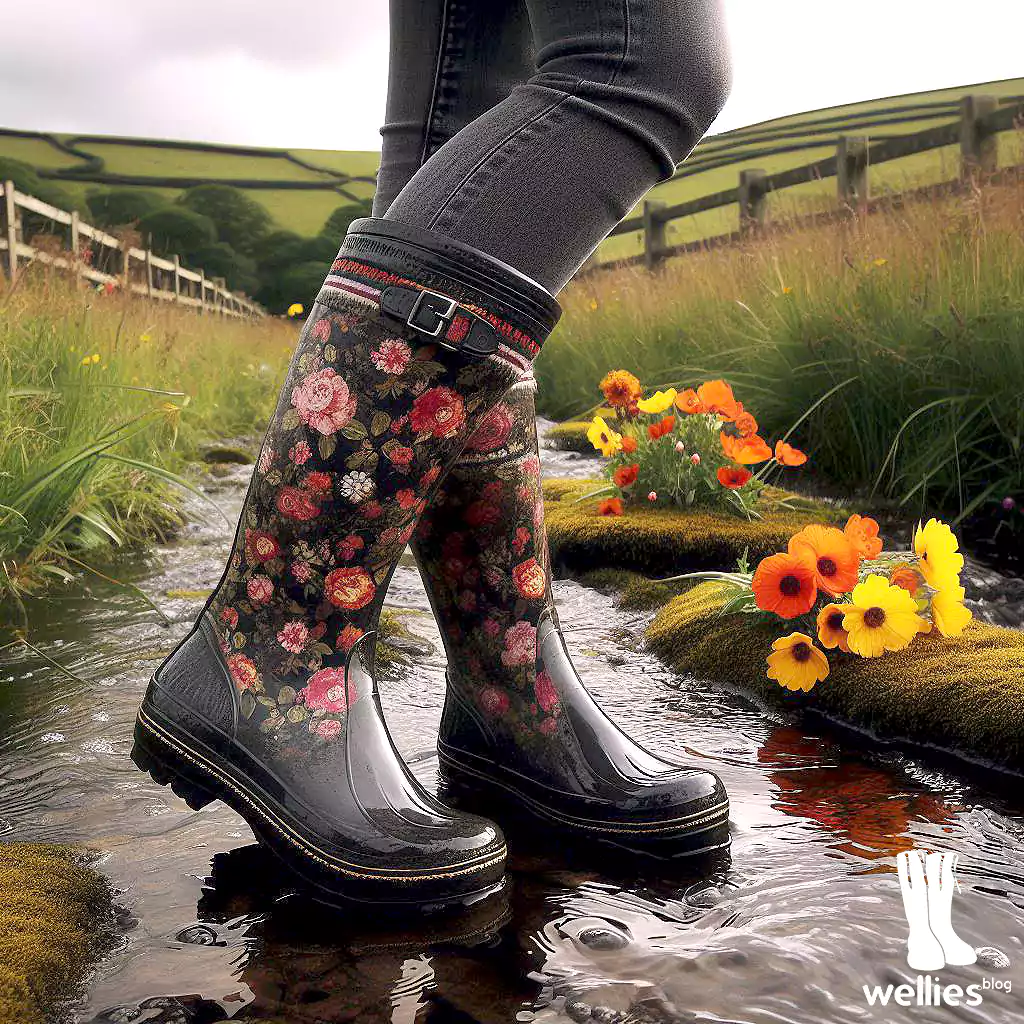
Wellies for festivals and events
Wellies have also become a popular choice for music festivals and other outdoor events, where they offer a practical and stylish solution for navigating the often-challenging terrain. Their ability to seamlessly transition between functional and fashionable use has contributed to their enduring popularity, as festival-goers can now enjoy the comfort and protection of wellies without sacrificing their sense of style. Whether you’re dancing in the mud or exploring the grounds, a reliable pair of wellies can make all the difference in ensuring you have a memorable and enjoyable experience.
The manufacturing process of wellies
The production of wellies, or rubber boots, involves a range of materials and techniques that have evolved over time. Traditionally, wellies were crafted from natural rubber, which was harvested from rubber trees and then processed into a durable, waterproof material. However, in recent years, many manufacturers have turned to synthetic materials, such as PVC or polyurethane, which can be more cost-effective and easier to produce.
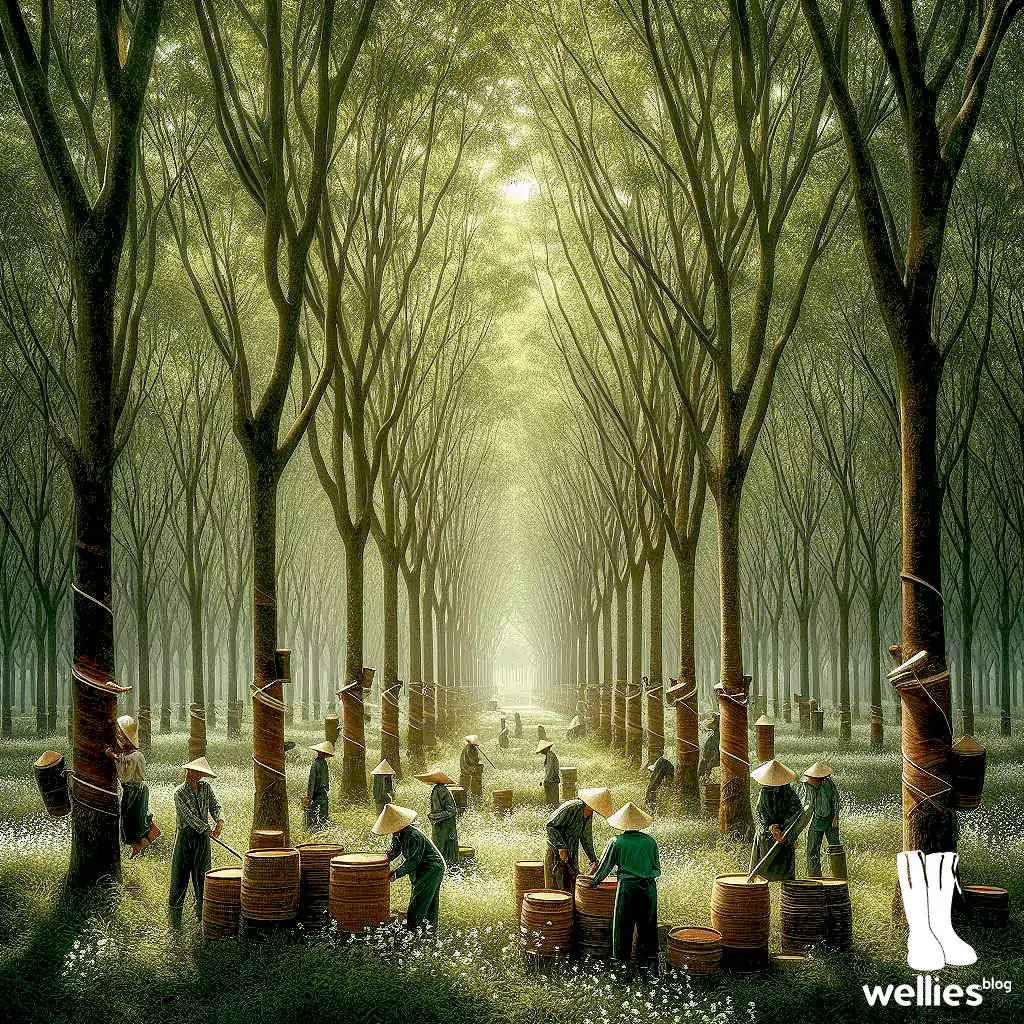
Materials and techniques used
The manufacturing process of wellies often involves techniques like injection moulding, dip moulding, and vulcanisation to create the distinctive shape and properties of the wellington boot. Injection moulding allows for precise control over the boot’s design and dimensions, while dip moulding immerses the mould in a liquid rubber or polymer to form the boot’s shell. Vulcanisation, a process that strengthens and stabilises the rubber, is also commonly used to enhance the durability and water-resistance of wellies.
Sustainable and eco-friendly wellies
In recent years, there has been a growing demand for sustainable and eco-friendly wellies, which are produced using recycled or biodegradable materials. These eco-friendly alternatives seek to reduce the environmental impact of traditional manufacturing processes, which can be resource-intensive and generate significant waste. By incorporating recycled plastics, natural rubber, or plant-based compounds, manufacturers are able to create wellies that are not only durable and functional but also more environmentally responsible.
| Material | Sustainability | Durability |
|---|---|---|
| Natural Rubber | Renewable, Biodegradable | Excellent |
| Recycled Plastics | Reduces Waste, Recyclable | Good |
| Plant-based Compounds | Renewable, Biodegradable | Good |
| Synthetic Polymers (PVC, Polyurethane) | Non-renewable, Difficult to Recycle | Very Good |
Caring for your wellies
Proper care and maintenance are essential for extending the lifespan of your wellies. Regular cleaning, using mild soap and water, can help remove any mud, dirt, or debris that has accumulated on the boots. It’s also important to allow the wellies to fully dry before storing them, as moisture can lead to the growth of mould or mildew.
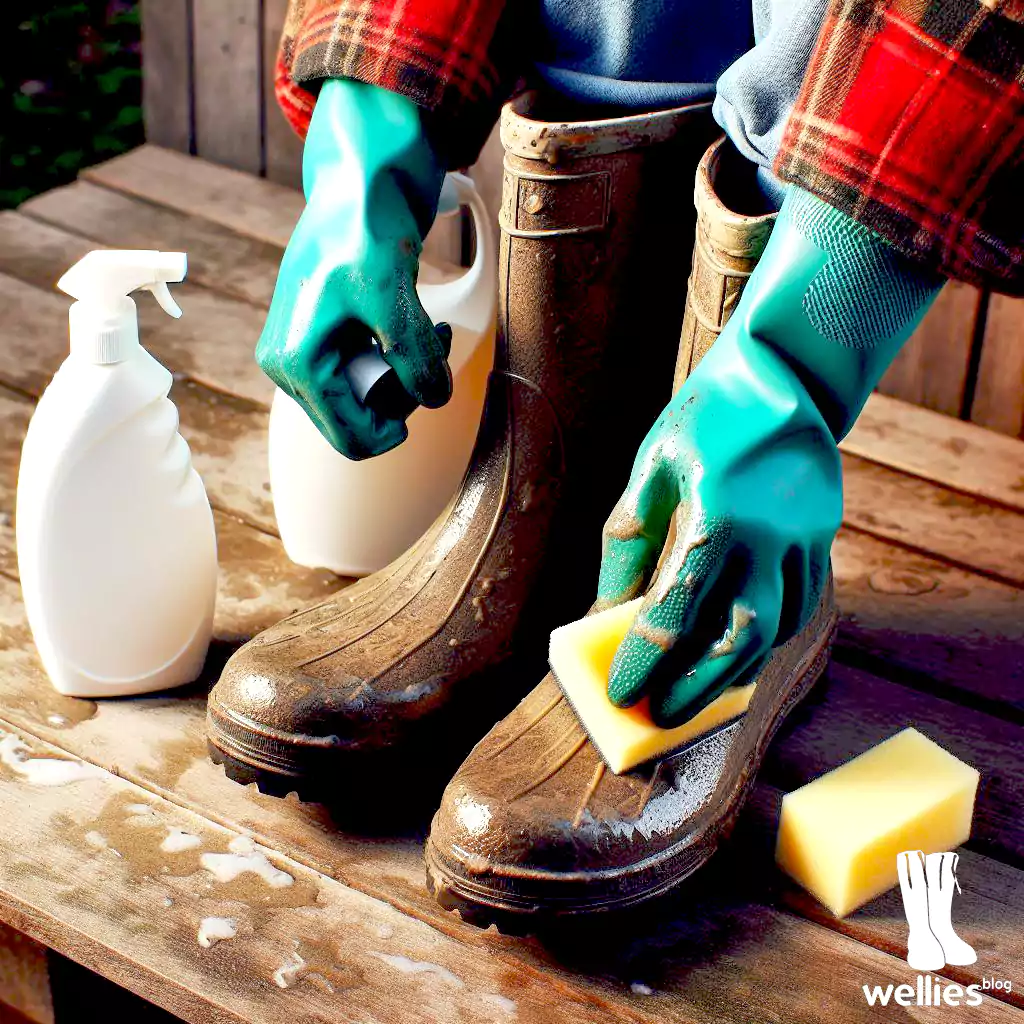
Tips for cleaning and maintaining wellies
To further protect your investment, consider applying a waterproofing spray or conditioner to the boots, which can help repel water and prevent cracking or fading of the material. Regularly inspecting your wellies for any signs of wear or damage, such as cracks or holes, can also help you address issues before they worsen. By following these simple steps, you can ensure your trusty wellies remain in top condition for many years to come.
Extending the lifespan of your wellies
With proper care and attention, your wellies can continue to serve you faithfully for many years. Avoid exposing them to extreme temperatures, which can cause the material to degrade, and store them in a cool, dry place when not in use. Additionally, consider rotating between multiple pairs of wellies to distribute the wear and tear more evenly. By taking these measures, you can maximise the lifespan of your beloved footwear and get the most value out of your investment.
Wellies around the world
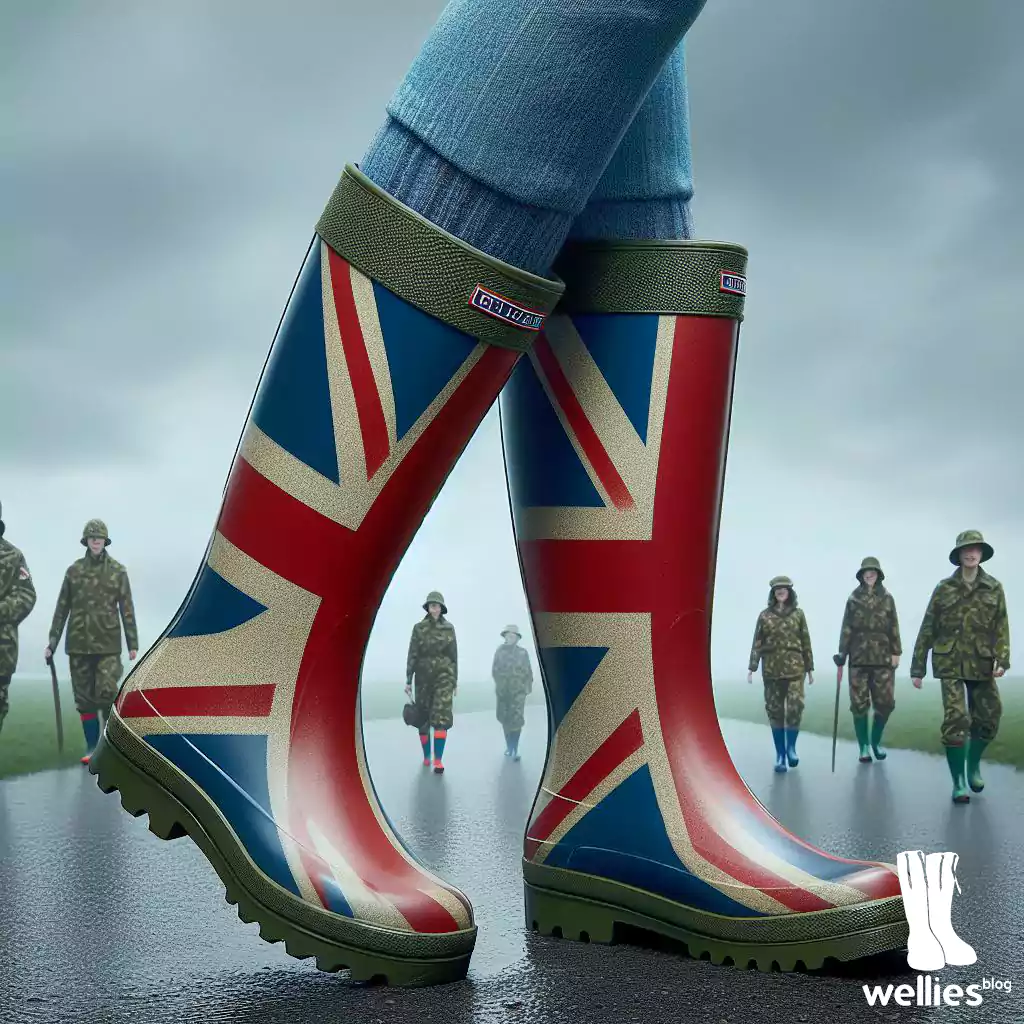
While the wellington boot is most strongly associated with British culture, it has gained popularity and recognition worldwide. From the farmlands of New Zealand to the streets of Tokyo, the iconic wellies have become a global phenomenon, with various cultures and regions adapting the design to fit their own needs and traditions.
The global popularity of wellies
In some countries, the wellies may be known by a different name, such as “gumboots” or “rain boots,” but the core function and design remain the same. These cultural variations and interpretations of the wellington boot reflect the universal appeal of this practical and versatile footwear.
Cultural variations and interpretations
Whether worn for outdoor activities, music festivals, or everyday casual wear, the wellies have become a beloved and iconic piece of footwear across the international stage. The ability of this global footwear to transcend cultural boundaries and adapt to local traditions is a testament to its enduring appeal.
| country | local name for wellies | distinctive features |
|---|---|---|
| United Kingdom | “Wellies” | Classic knee-high design, often in bold colours |
| Australia | “Gumboots” | Taller, more utilitarian design for rugged terrain |
| Japan | “Rēngubūtsu” | Sleek, minimalist interpretation with Japanese aesthetics |
| Brazil | “Botas de Borracha” | Vibrant, tropical-inspired patterns and designs |
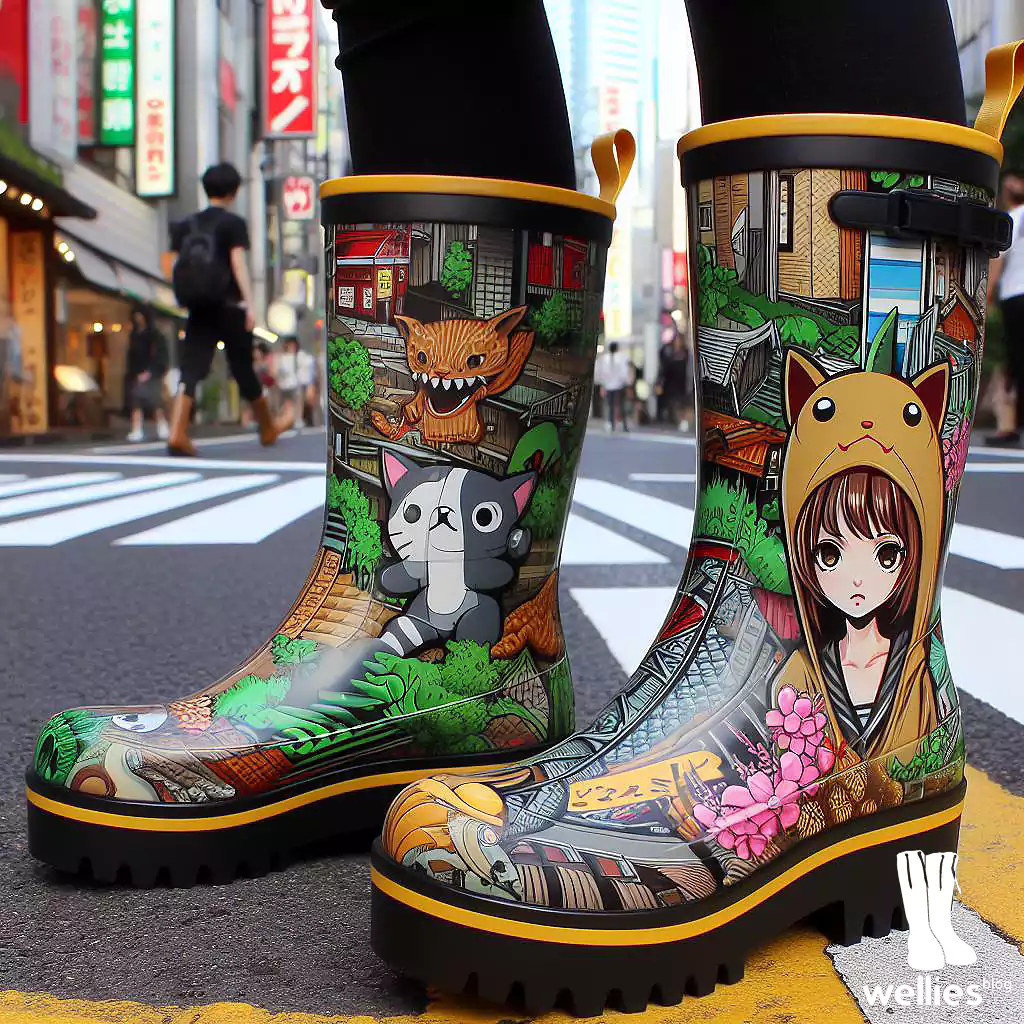
Conclusion
In conclusion, the iconic rubber boot known as the “wellies,” “gumboots,” or “rubber boots” has a rich and fascinating history that reflects its enduring popularity and cultural significance. From its practical origins as workwear to its current status as a fashion statement and symbol of British rural life, the wellington boot has evolved and adapted to meet the changing needs and preferences of both its wearers and the wider society.
Whether worn for outdoor activities, music festivals, or everyday casual wear, the versatility and resilience of the wellies have cemented their place as a beloved and iconic piece of footwear. By understanding the origins and evolution of these three names for the rubber boot, we can appreciate the depth and nuance of this ubiquitous and much-loved item.
The wellies have transcended their practical beginnings to become a cultural icon, representing the resilience, resourcefulness, and connection to the land that are central to British rural traditions. As the wellies continue to evolve and adapt to meet the needs of a changing world, their enduring popularity and significance within British culture are sure to endure.



